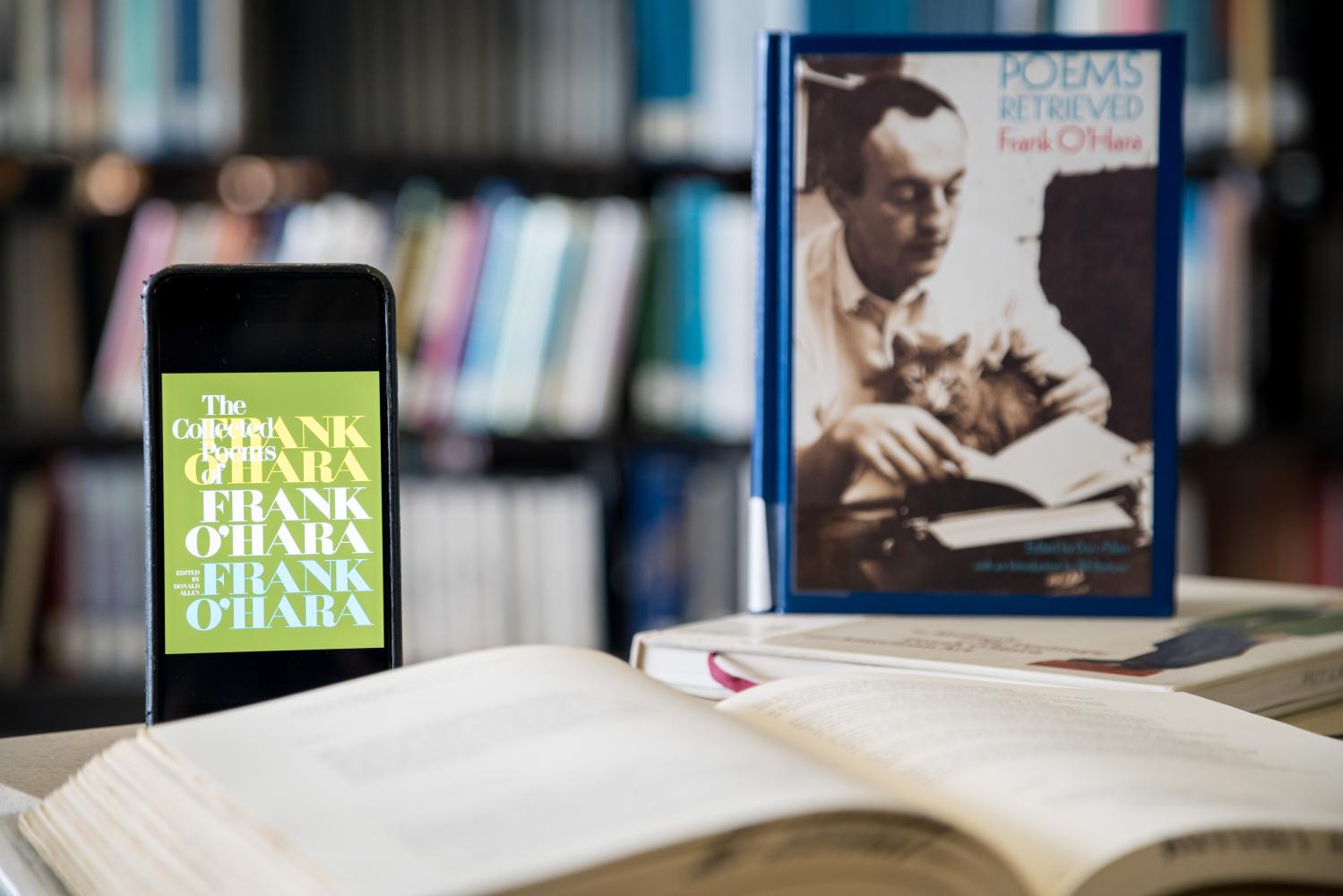Poetry and Locative Media: A Window into the Digital Humanities
by Ryan Black | published Mar. 9th, 2017
Traditionally, storytelling has often been thought of as a very linear process. Describing such narratives in that manner may unfairly make them seem trite, but to many it is seen as the default. There are ways of conveying a nonlinear narrative with traditional media — as many notable films and television shows have done — but nowadays there are far more forms that storytellers can use.
With the proliferation of less conventional storytelling mechanisms, like those of video games and even novels told within wikis and HTML coding, storytellers have found increasingly experimental ways of presenting a narrative. That is what Karl Mohn, a former RIT professor, believes and it has inspired him to develop an application that presents the work of 20th century poet Frank O'Hara in a way unlike any other.
Establishing O'Hara's "New York"
A proponent of the growing field of Digital Humanities, Mohn has been working on the prototype of an app that spatially reorganizes O'Hara's work across all of Manhattan.
"Essentially, the way the app is going to be set up, it's almost like you would open up Google Maps," Mohn explained. "But instead of seeing the pins for the Corner Store, there'll be pins or lines related to the different poems, spread out in space over all of Manhattan." The idea is for users to read O'Hara's works in proximity to many of the places that inspired or are featured in his poetry. Many of O'Hara's poems are about specific places in New York that he visited or would frequent during his life in the 1950s and early 1960s.
Describing his work as very "slice-of-life," Mohn noted how O'Hara was often inspired
"The places that he was writing about — that was 50 years ago," Mohn pointed out. "A lot of those places don't exist anymore, either because [they are] businesses that have closed or in some cases entire buildings that have been torn down." To circumvent that as best as he can, Mohn's aim for the finished app is to allow users to point their phone at where those places were, and see images of them in the state closest to when the respective poem was written.
Bridging the Gap Between Reader and Author
"Instead of a poem being on page 82, we have 'the poem over there,' 'the poem up the street.' I think it engages a person's body in relation to the poetry in a way that other delivery modes of poetry don't,"
"Instead of a poem being on page 82, we have 'the poem over there,' 'the poem up the street.' I think it engages a person's body in relation to the poetry, in a way that other delivery mode[s] of poetry don't."
With this manner of organization and the AR functionality, Mohn ultimately wants to bridge the gap between the reader and the author, "giving users a better understanding of O'Hara's perspective, both spatially and temporally." Mohn brought up how O'Hara was an openly gay man during the 1950s and early '60s, a time before Stonewall or the LGBTQIA+ Civil Rights movement. This was why O'Hara's work in particular resonated with Mohn.
"That was a very contentious identity to have," Mohn pointed out. "And I think there is value for a contemporary audience to be able to — and forgive the cliché — walk a mile in his shoes."
Growth of the Digital Humanities
Mohn made note of how several universities in recent years haveembraced the "Digital Humanities," andRIT is no exception. An RIT major for undergraduate students entitled "Digital Humanities and Social Sciences" was announced last fall and is available for the first time this semester. It consists of classes from the College of Liberal Arts, B. Thomas Golisano College of Computing and Information Sciences and the College of Imaging Arts and Sciences.RIT is entering a field it defines as "a dynamic and interdisciplinary field of research dedicated to furthering the possibilities of computing for humanities and social sciences subjects."
RIT's stated aim for DHSS students is for them to "learn to understand the historical and cultural contexts for and to think critically about new technologies," noting how tools and techniques like that of geospatial technology, electronic literature and 3D design visualization can provide for new and greater understanding within several of the social sciences. Mohn feels the same; he pointed out how, through the development of a new technology or medium, we gain new ways to ask questions.
"That's the real value of the Digital Humanities," Mohn said. "It gives us ways to use technology and media as a lens to look at the humanities, to ask new questions about what is our relationship to art, what is the relationship between technology and art."
"That's the real value of the digital humanities. It gives us ways to use technology and media as a lens to look at the humanities, to ask new questions about what is our relationship to art, what is the relationship between technology and art."
Mohn hopes to finish his prototype for the app by the end of this summer, before starting to teach at the University of Rochester. Given the proper funding, Mohn sees this project as one that students could help develop. Both he and RIT echo the same sentiment:team-based projects are staples of the Digital Humanities. For Mohn's app in particular, he believes thatstudents on both the literary and technical side could benefit from working collectively on such an endeavor.



